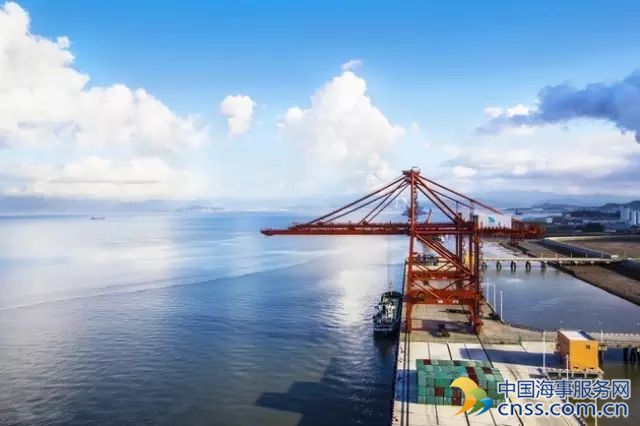Hanjin Aims to Sell More Than Half Its Ships

Debt-ridden Hanjin Shipping Co. is working on a restructuring plan that calls for the drastic reduction of its fleet and returning the vast majority of the ships it charters to their owners, according to people with direct knowledge of the matter.
Despite the efforts, these people say the most likely scenario is still that the Korean operator— the world’s seventh-biggest in terms of capacity—will be liquidated, marking one of the shipping industry’s biggest failures.
Hanjin filed for bankruptcy protection last month. The South Korean government has strongly indicated it has no plans to bail out the company.
A Korean court will decide in December whether to accept the plan or let the company go under, according to court officials in Seoul.
One person with knowledge of Hanjin’s efforts to restructure said the operator is considering a number of scenarios but focusing on one “that involves Hanjin keeping up to 15 of its 37 ships, and giving back to owners almost all of the 61 chartered vessels.” Under that scenario, which is subject to approval by the bankruptcy court, “Hanjin will emerge as a small regional operator in Asia that will move a small part of Korea’s exports,” the person said.
Hanjin didn’t return calls for comment.
Since Hanjin filed for bankruptcy in Korea in late August, dozens of ships have been denied access to ports around the world due to uncertainty about who would pay docking fees, container-storage and unloading bills. Those ships are carrying half a million containers and cargo valued at more than $14 billion. Some of them have been seized by the company’s creditors.
The Korean carrier moves 3% of containers globally and up to 10% of those shipped between Asia and Europe. Some 25,000 containers cross the Pacific daily on Hanjin ships.
About 95% of the world’s manufactured goods—from designer dresses to laptops—are moved in containers.The disruption in the supply chain comes as retailers in the U.S. and Europe are stocking their shelves for the holiday season.
The company confirmed this week that it had returned five of its chartered vessels to their owners. A Korean government statement on Thursday said 73 vessels were still at sea, of which 37 were being told to return to Korea. The rest drifted near ports on fears they would be seized by creditors.
Hanjin’s main charterers, including Danaos Corp., Navios Maritime Partners LP and Seaspan Corp. that have a combined exposure of more than $1 billion to Hanjin, were hoping for a last-minute intervention by the South Korean government that would allow Hanjin to honor its vessel leasing commitments. That looks less and less likely.
“Hanjin now has two alternatives: ether to drastically downsize or to liquidate,” said Iraklis Prokopakis, Danaos’ chief operating officer. “We have eight ships chartered to Hanjin and five will be returned. The other three still have cargo on them so I don’t know what will happen.”
Danaos has a $560 million exposure to Hanjin.
Mr. Prokopakis said the determining factor at the December court hearing will be whether Hanjin has enough cash to continue operating, even at a much smaller scale.
But with Hanjin’s main creditor, state-run Korean Development Bank, showing no intention to pump more cash into the ailing carrier, few executives in the shipping industry believe it will manage to stay above water.
“Any cash Hanjin still has will go to get its ships safely to ports and unload the cargo,” said Lars Jensen, chief executive of Copenhagen-based SeaIntelligence Consulting. “I expect them to start selling their own ships when the legal issues with creditors are settled.”
Selling the ships won’t be easy. The majority of Hanjin’s fleet are ‘Panamaxes’ that can carry fewer than 10,000 containers. Such vessels are fast becoming outdated in the wake of the widening of the Panama Canal earlier this year. That expansion allows ships moving 12,000 containers or more to pass through the isthmus.
“So their only true valuable assets are four 13,000-container ships,” Mr. Jensen said. Hanjin may try to hang on to them hoping to become part of an alliance, when the mess clears up, he said, “but more likely they may sell them as customers won’t want any of their cargo on Hanjin ships. The trust is gone.”
The Korean government said this week it is asking courts to protect Hanjin ships from being seized in Spain, Germany, the Netherlands, and Italy. It plans to do the same next week in countries including Australia, India and the United Arab Emirates. Such a legal protection is already in place in Korea, the U.S., Japan, the U.K. and Singapore, it says.
Source: Wall Street Journal
HEADLINES
- Do shipping markets want Biden or Trump for the win?
- All 18 crew safe after fire on Japanese-owned tanker off Singapore
- Singapore launching $44m co-investment initiative for maritime tech start-ups
- Cosco debuts Global Shipping Industry Chain Cooperation Initiative
- US warns of more shipping sanctions
- China continues seaport consolidation as Dalian offer goes unconditional